10 Expert Tips For Tire Safety and Maintenance
We often meet up with our friends and discuss how fast our cars go, right? We go on and on about how brilliant the engine is, how smooth the suspension is and how luxurious the interiors are. But have you ever stopped to discuss about the only thing that allows your car to move?
The four tires on your vehicle are the things that make your vehicles functional. Unfortunately, proper tire maintenance is an important safety function often neglected. The importance of properly maintaining your tires cannot be overemphasized. Proper tire inflation, tread depth, alignment and rotation can add up to a safer, more cost-efficient ride.
Autogyaan brings you 10 tips to maintain and ensure tire safety:
1. Check tire pressures and adjust at least once a month
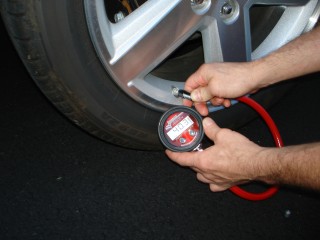 There can be a gradual loss of pressure through the membranes of the tire itself. It is typical for pressure to drop approximately 1 psi per month and 1 psi for each 8-degree loss in ambient temperature.
There can be a gradual loss of pressure through the membranes of the tire itself. It is typical for pressure to drop approximately 1 psi per month and 1 psi for each 8-degree loss in ambient temperature.
Under-inflation has immediate effects on vehicle handling (as well as fuel consumption), but its potential impact on overall safety and tire life are even greater. It results in premature and uneven tread wear on the outer edges.
That’s why it is imperative to check and adjust tire pressure at least once a month and before every long trip (over 250 miles). Recommended pressures are printed on a label located on the driver’s doorframe or in the glove box.
2. Inspect regularly for abnormal wear or damage
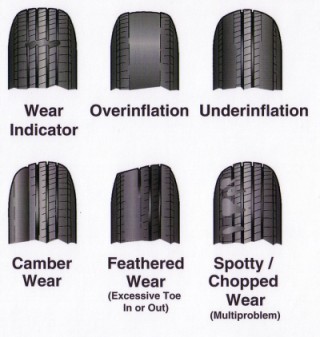 To ensure maximum tire life and safety, give your tires a visual inspection at least once a month and before long trips. This is easily done at the same time you check pressures.
To ensure maximum tire life and safety, give your tires a visual inspection at least once a month and before long trips. This is easily done at the same time you check pressures.
Look for:
- Excessive or uneven tread wear, which may indicate improper inflation or steering and suspension misalignment.
- Cracks or bulges on the sidewalls or tread.
- Signs of puncture, or nails, screws, glass, pieces of stone or any foreign object imbedded in the tire.
If you detect any of these conditions, take the vehicle in for further diagnosis immediately. In most cases, punctures can be repaired if their size is not excessive.
Also, if abnormal tire pressure loss occurs, check the valve stems for leakage, as well as the tire itself.
3. Rotate every 6,000 miles or according to owner’s manual
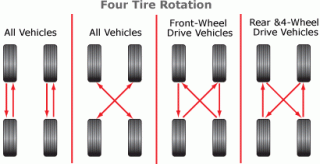 Tire rotation is essential to achieve even tread wear and maximum tread life. On front-wheel-drive cars, for example, most of the braking, steering and driving forces are carried by the front tires, which inevitably wear much faster.
Tire rotation is essential to achieve even tread wear and maximum tread life. On front-wheel-drive cars, for example, most of the braking, steering and driving forces are carried by the front tires, which inevitably wear much faster.
A “cross-rotation pattern”—that is, moving the left-front tire to the right-rear axle, the right-front tire to the left-rear axle, etc.—can best balance tread wear and maximize tire life. That sequence can be performed on any vehicle equipped with four non-unidirectional tires. Designated by an arrow on the sidewall, unidirectional tires must be rotated only front to rear and rear to front, on the same side of the vehicle, so their direction of revolution does not change.
All-wheel-drive and four-wheel-drive vehicles are best suited to a lateral rotation—left to right and right to left—at the same end of the vehicle.
4. Maintain tires in proper balance
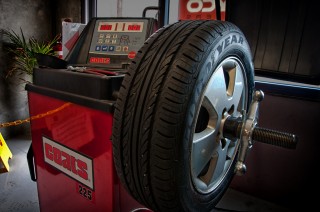 Out-of-balance tires can not only cause uneven tread wear and an uncomfortable ride but also excessive wear on the suspension and other components. An out-of-balance tire can be detected by a severe thumping, usually most pronounced at highway speeds.
Out-of-balance tires can not only cause uneven tread wear and an uncomfortable ride but also excessive wear on the suspension and other components. An out-of-balance tire can be detected by a severe thumping, usually most pronounced at highway speeds.
If such a condition occurs, have your tires dynamically balanced as soon as possible. Tire balancing involves placing weights in appropriate places on the bead or inner circumference of the wheel. Tires should always be balanced when first installed, and whenever they are remounted.
5. Maintain steering and suspension in proper alignment
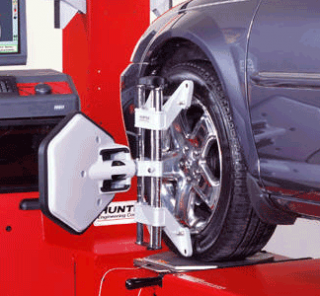 Misalignment of the steering and suspension, front or rear, can not only adversely affect the steering feel and stability of a vehicle, but also cause rapid and uneven tire wear. If not corrected, this misalignment can ruin a tire in a short time and distance.
Misalignment of the steering and suspension, front or rear, can not only adversely affect the steering feel and stability of a vehicle, but also cause rapid and uneven tire wear. If not corrected, this misalignment can ruin a tire in a short time and distance.
If you feel the steering “pulling” in one direction or another when traveling straight ahead on a flat road with no crosswind, or if you notice uneven wear on the tires, particularly front tires, you should have the alignment checked and adjusted as soon as possible.
6. Never overload
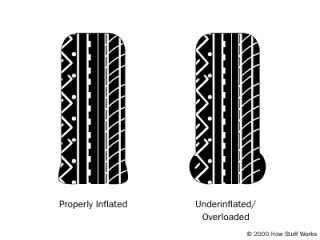 Overloading is the second leading cause of tire failure, next to under-inflation.
Overloading is the second leading cause of tire failure, next to under-inflation.
All tires are designed to operate within a maximum load range designated by a code on the tire sidewall. Exceeding this can result in both excessive wear and reduced tire life due to structural damage, including the potential for sudden failure.
7. Avoid overheating
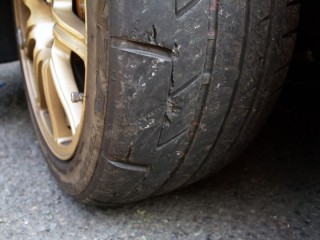 Heat, like load, is the enemy of tire life. The higher the heat it is subjected to, the shorter the tire’s life—in terms of both treads wear and structural resistance.
Heat, like load, is the enemy of tire life. The higher the heat it is subjected to, the shorter the tire’s life—in terms of both treads wear and structural resistance.
To maximize tire life and safety, therefore, it is important to minimize the simultaneous occurrence of such conditions. Be particularly vigilant at high temperatures and adjust your driving style to consider its effect on tire life and performance.
8. Replace when required
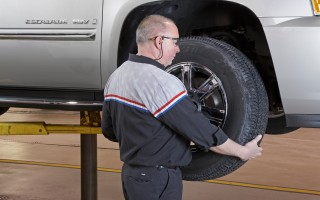 Your vehicle’s tires should be replaced if:
Your vehicle’s tires should be replaced if:
- Any portion of the tread is worn to the “wear indicator bars”—lateral bars molded into the tire grooves at about 20 percent of their new tread depth—or to a depth, as measured in a groove, of 1/16th inch or less.
- Tread wear is severely uneven (in which case have the wheel alignment checked) or the center is worn much more than the edges (be more vigilant about tire pressures).
- The tire sidewalls are severely cracked or there are bulges anywhere on the tire.
- The tire has been punctured and cannot be satisfactorily repaired.
9. Install tires in matched pairs or complete sets
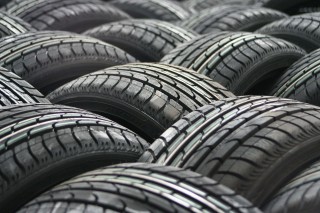 Installing different tires on the left and right sides can significantly upset the handling balance of a vehicle—not to mention its ABS operation. For that reason, it is imperative that tires be installed in front or rear pairs, or complete sets.
Installing different tires on the left and right sides can significantly upset the handling balance of a vehicle—not to mention its ABS operation. For that reason, it is imperative that tires be installed in front or rear pairs, or complete sets.
It is essential that side-to-side pairs be the same and highly desirable that front and rear pairs also be matched, except in cases such as high-performance cars with larger tires in the rear.
10. Select the right tires for your vehicle and driving environment.
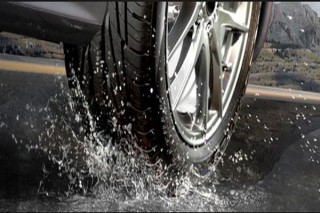 Recent improvements in “all-season” tires have substantially advanced the concept of one-tire-for-all-needs. On the other hand, more specialized tires now available for high performance, rain, snow, ice, off-road and touring. Some are even unidirectional, “run-flat” and even “green.”
Recent improvements in “all-season” tires have substantially advanced the concept of one-tire-for-all-needs. On the other hand, more specialized tires now available for high performance, rain, snow, ice, off-road and touring. Some are even unidirectional, “run-flat” and even “green.”
Most drivers are happy just to know they have “all-season” tires, and that is the way most new vehicles are equipped. These are a benign compromise, sacrificing exceptional capability in any one area of performance for acceptable capability in all.
By Varun Mohan

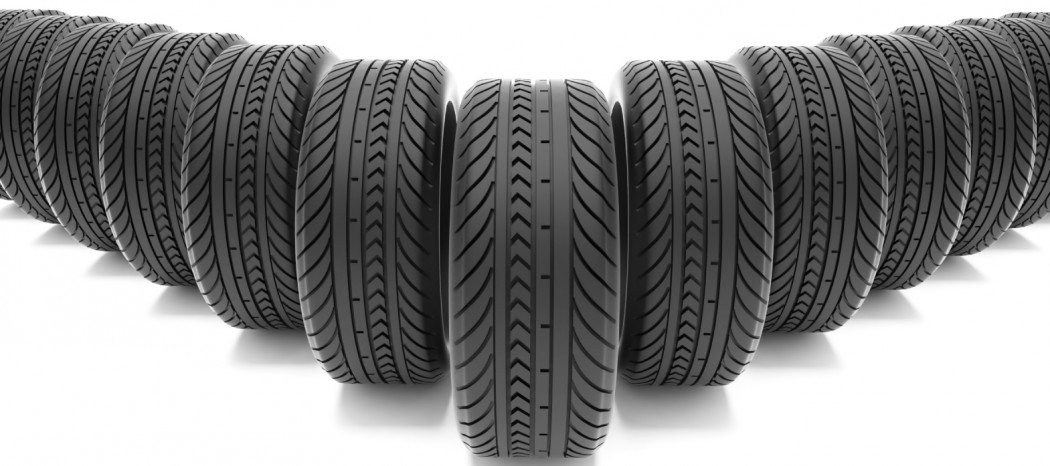
There are no comments
Add yours